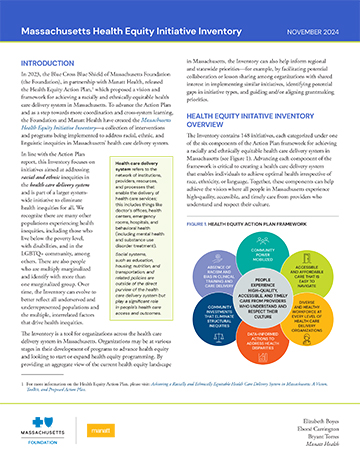Resources
An estimated 8.2 percent of the global population, or about 673 million people, experienced hunger in 2024, down from 8.5 percent in 2023 and 8.7 percent in 2022, announced in The State of Food Securi...
Keurig Dr Pepper (KDP), an H2HC Leadership Council member, has released their 2024 Corporate Impact Report.
KDP’s seven Key Impact Areas are:
Climate & Nature Action
Water Use & Stewardship...
The Greater Boston Food Bank (GBFB), an H2HC Leadership Council member, released its fifth annual statewide survey on food insecurity, The Cost of Hunger in Massachusetts.
The survey, created in col...
Recent survey data commissioned by The Rockefeller Foundation shows that Americans of all demographics—including different political backgrounds—see Food is Medicine (FIM) programs as an effective...
Feeding America’s mission is to advance change in America by ensuring fair access to nutritious food for all as part of a nationwide network of more than 200 food banks, 22 statewide food bank assoc...
The de Beaumont Foundation’s new Communicating about Public Health: A Toolkit for Public Health Professionals is a research-based resource that equips public health workers with practical mess...
HHS and USDA have released the Scientific Report of the 2025 Dietary Guidelines Advisory Committee. The report contains the 2025 Dietary Guidelines Advisory Committee’s (Committee) independent, evid...
This is a comprehensive and contemporary resource for health inequality monitoring, consolidating foundational and emerging knowledge in the field. It aims to support the expansion and strengthening o...
The Blue Cross Blue Shield of MA Foundation launched the MA Health Equity Initiative Inventory to advance its 2023 Health Equity Action Plan and coordinate cross-system learning. The Inventory is an ...
The State of U.S. Wealth Inequality presents a timely look at average, inflation-adjusted wealth for various demographic groups. The St. Louis Fed’s Institute for Economic Equity provides quarterly ...









